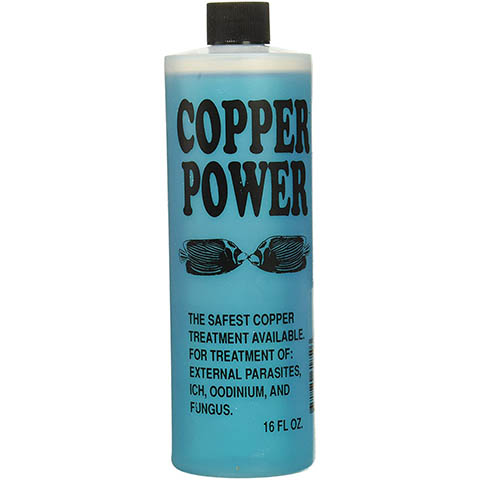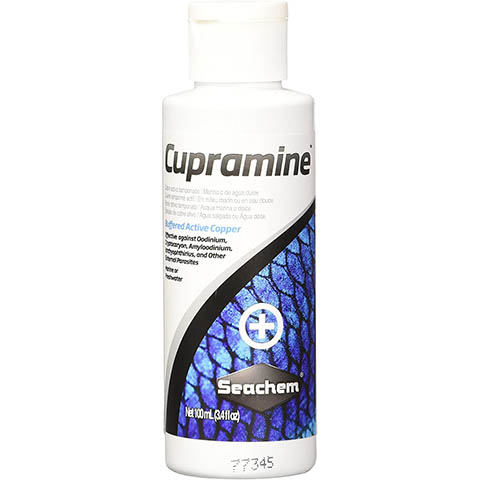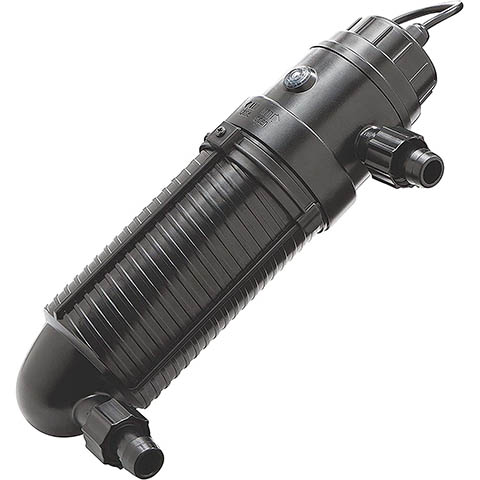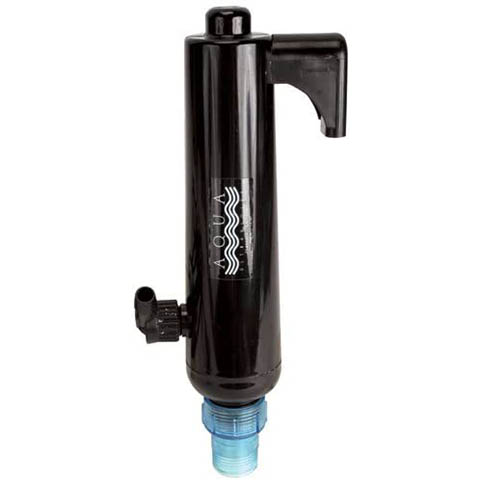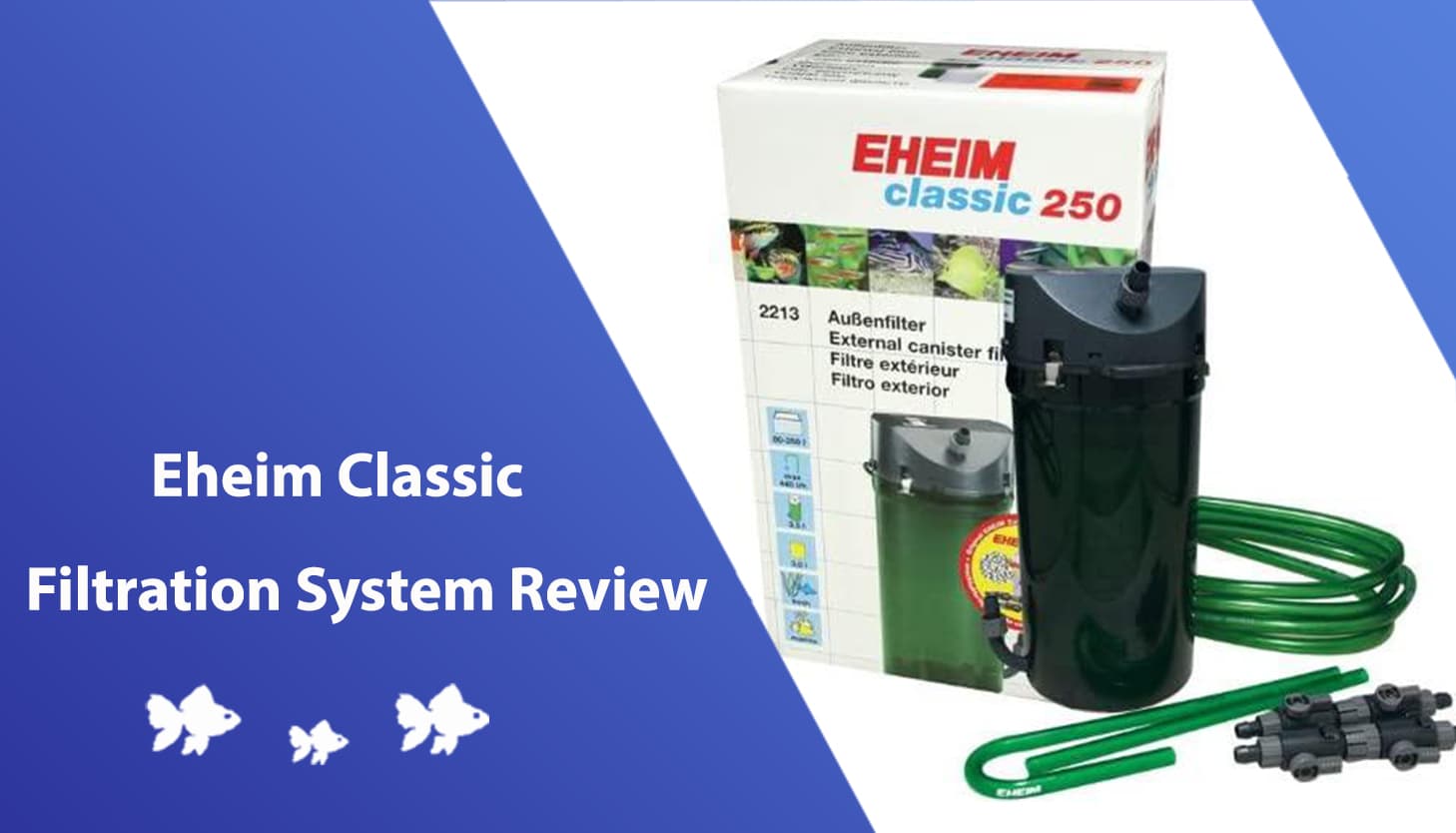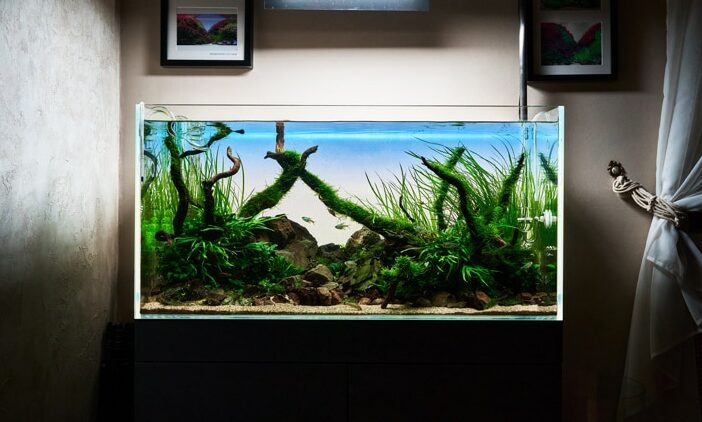4 Best Treatments For Saltwater Ich in Aquarium Fish

Updated on
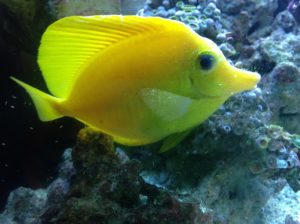
Having our fish get sick is never ideal. After all, they are our pets and we always want the very best for them. There is one sickness called marine ich, which can end up causing various symptoms in our pet fish. This is a potentially fatal disease that can quickly wipe out a whole population of fish if you are not vigilant.
You need to know what marine ich is, what it can do, how to identify and prevent it, and how to treat it too. Let’s get right into it and teach you all about marine ich or Cryptocaryon Irritans so you can deal with it when the inevitable does occur. Yes, this is something that most fish owners will have to deal with at some point, so you may as well be prepared for it with the best treatment options (this product is our top pick).
What Is Marine Ich?
Marine ich is also known as the white spot disease, which is pretty adequate because the first signs usually take the form of white spots on your fish. Marine ich is actually caused by a fully ciliated protozoan known as Cryptocaryon. These little microscopic creatures are unfortunately present in all saltwater environments such as your saltwater aquarium, marine or coral reef fish tank, and in various aquaculture ponds and aquascapes too.
The reality is that these little invaders are present pretty much everywhere, but the trick is to have the right identification, prevention, and treatments methods once they end up making your fish sick. These Cryptocaryon enter your fish’s body through their skin, gills, mouths, and other openings.
In a really healthy fish with a good immune system, these invaders might only cause some mild irritation and white spots. However, if your fish is not as healthy as it should be, it can these protozoa can cause loss of appetite, lethargy, respiratory distress, and eventually death too.
A Comparison of Our Favorites in 2024
| Rating | Image | Product | Details | |
|---|---|---|---|---|
| Best Overall |

|
Copper Power |
|
Check Price |

|
Seachem Cupramine Copper |
|
Check Price | |
| Best UV Sterilizer Treatment |

|
Coralife Turbo Twist 6X UV Sterilizer |
|
Check Price |

|
Aqua Advantage Hang On UV Sterilizer |
|
Check Price |
Treatments For Saltwater Ich in Aquarium Fish
Now that we have identified what exactly marine ich is and what causes it, you definitely need to know how to treat it effectively. Let’s talk about a couple of different treatment methods and how they work.
The Copper Treatment
The first thing to be noted is that this copper treatment will only truly be effective if the other causes of stress have already been eliminated. Before you begin this copper treatment, you need to ensure that your fish are in the proper conditions, that the lighting is right, the water parameters are adequate, that the population in the tank is not too large, and that they are on a proper diet. If you remove all stress creators, this copper treatment should do the trick just fine.
Another thing to make clear is that copper, even in very low concentrations, can be lethal to invertebrates. Fish can higher slightly higher doses of it, but still not all that much, so you do need to be extremely careful when administering a copper treatment for marine ich.
You should get yourself a copper ion test kit so you can accurately measure the concentration of copper in the water to ensure that you don’t have lethal doses of it in the aquarium. On a side note, there are two main types of copper, ionic copper and chelated copper, so you need to be sure to get the appropriate test kit for the type of copper in question.
Copper ions will quickly bond with magnesium carbonate or calcium carbonate based rocks, so if you have anything but a bare-bottom tank, the copper levels in the water can change daily, which means that you need to test more often. If administering a copper treatment, you need to test 3 or 4 times on the first day and then do daily tests after that.
If you are using ionic copper, the concentration of it in the water should be between 0.115 and 0.2 parts per million, but no more under any circumstances. It will take between 14 and 21 days for the treatment to take full effect.
Usually, to make it reliable, you should continue treatment for at least 7 days after the symptoms of marine ich have disappeared. In case you were wondering, the Cryptocaryon are only susceptible to the copper treatment at certain points in their lifecycle, plus they can only be effected by it when they are outside of the fish. This is why the treatment has to last for as long as it does, to make sure that as many Cryptocaryon are killed as possible.
Some people love using the alternative, which is chelated copper, as it is hailed for being much safer and easier to control than ionic copper. However, it is also noted that it takes far higher concentrations of chelated copper to achieve the same treatment effects as with lower doses of ionic copper, therefore rendering the whole safety aspect of chelated copper somewhat mute. If you have a lot of substrate and other objects in the tank, you might want to remove the afflicted fish to a bare-bottom tank so the copper cannot bind to anything.
As long as there are fish in the original tank, copper will not fully treat the Cryptocaryon, so you need to remove all fish from the tank, but them in a bare bottom tank, and then add the copper to that. Adding the copper to a display tank is not recommended as totally removing it is near impossible.
The 4 Best Treatments For Saltwater Ich in Aquarium Fish
1. Copper Power
Copper Power is a very safe and effective copper treatment for marine aquariums that are suffering from marine ich. It is hailed as being one of the safest possible options out there. With Copper Power it is recommended that you add enough into the water so that the Copper Power concentration is at no more than 2.5 parts per million. This will ensure the death of Cryptocaryon while also ensuring the health of your fish.
2. Seachem Cupramine Copper
One thing that you might really like about Seachem Cupramine Copper is that it is safe and effective in both freshwater and saltwater environments. People really like this stuff because it is much less toxic to fish than other alternatives, it won’t contaminate your substrate, and it can be easily removed from the aquarium with good carbon chemical filtration. However, you cannot use this stuff if you have any invertebrates in your aquarium.
UV Sterilizer Treatment
Another way in which you can control the population of Cryptocaryon in the water is to use a high powered UV sterilizer. UV sterilizer can kill a whole variety of floating parasites and bacteria including Cryptocaryon tomites too. You will need a fairly powerful UV sterilizer in order to kill all of these free floating protozoa.
Keep in mind that a UV sterilizer will only kill them if they are outside of your fish. You might need to do some research here, because there are some pros and cons of UV sterilizers, mainly the fact that one that is way too powerful will bombard your fish with an excessive amount of UV radiation.
1. Coralife Turbo Twist 6X UV Sterilizer
This is a very simple yet effective UV sterilizer option to go with. The Coralife Turbo Twist UV Sterilizer can be effective for aquariums up to 250 gallons in size, which is quite impressive indeed. This particular UV sterilizer has a double wall light chamber in order to make it much more durable and extend its lifespan greatly.
The bulbs in the Coralife UV Sterilizer are made with quartz glass, which means that they also gave a great lifespan, plus they help emit as much UV light as possible in order to be highly effective.
Also, the high output and spiral design of the Coralife helps to make it extremely effective and efficient. You might like this option because the mounting hardware it comes allows you to mount the Coralife UV Sterilizer either vertically or horizontally.
This model can be used with both freshwater and saltwater aquariums, which is a bonus no doubt. One thing that needs to be said is that with the Coralife Turbo Twist UV Sterilizer, you will need to get a water pump with a minimum flow rate of 200 gallons per hour.
2. Aqua Advantage Hang On UV Sterilizer
Another great alternative to go with, this particular UV sterilizer is great for all kinds of saltwater and freshwater ponds, aquariums, and aquascapes too. You will like the fact that this is a simple hang on back model, which means that you just need to hang it on the edge of your aquarium.
There is no mounting required, which is obviously quite ideal. Just so you know, this particular model is ideal for saltwater aquariums up to 75 gallons in size or freshwater tanks up to 250 gallons. This is a very basic and affordable model that should do its job just fine when installed properly.
Why Do Fish Get Cryptocaryon?
What you need to know is that since most saltwater environments contain these Cryptocaryon, all of fish will usually be exposed to them. However, when your fish are exposed in small does, and when they are healthy, they can usually deal with these protozoa without issue. The issue is that in the wild, the concentration of Cryptocaryon in the water is very low compared to the amount of water and the size of the fish population.
For this reason, when in the wild, fish usually have the ability to fight off the marine ich infection. However, the story changes a little bit when home aquariums are involved.
One of the reasons why your fish can develop marine ich is because of bad water conditions. If you have a filter that does not work properly, no protein skimmer (we have covered the top 10 best protein skimmers here), and no UV sterilizer, these protozoa can build up to very high numbers, thus making your fish more susceptible to them.
Unlike in the wild, the concentration of Cryptocaryon in your aquarium can get very high. A fish tank is an enclosed space, usually with comparatively high amount of fish and plants in relation to the quantity of water. This means that there often a much higher concentration of the protozoa in aquariums, which can then be exacerbated by bad water conditions.
Moreover, stress and bad health is another big reason why fish in aquariums easily develop marine ich. When fish are harvested in the wild, brought to the pet shop, then brought home to your aquarium, they often suffer from high stress and anxiety levels because of the rapid environmental changes.
Different water parameters, the enclosure, different lighting conditions, and simply the stress from being moved around can decrease the efficacy of a fish’s immune system. Also, adding more fish to a pre-existing environment can cause stress for the new and the old fish.
Bad health, a sub-par immune system, stress, and an over-concentration of Cryptocaryon in the water can all lead to the development of marine ich.
How To Identify Cryptocaryo
Luckily, identifying this protozoan infection in your fish is not all that difficult. The first and most obvious symptoms will take the form of small white spots. These spots are usually around 0.5 to 2.0 millimeters in size. They often appear on the pectoral fins before anywhere else.
As the infection or disease gets worse, you will notice that these spots will become a little larger and they will spread over the rest of the fish. In terms of the fins, your fish may swim around with their fins folded or clamped together. The eyes of your fish will also begin to be cloudy as the disease is left to progress.
This can then also lead to a secondary fungal infection which looks like a light fuzzy coating on the fish. If the disease is left to progress even further, your fish may begin to show signs of irritation, lethargy, loss of appetite, and respiratory distress. Fish that are older, have better immune systems, and have already been exposed to these protozoa will often have less severe symptoms and may recover on their own.
However, new fish, stressed fish, ones with bad immune systems, and ones that have never dealt with Cryptocaryon before will have a much harder time dealing with the infection.
How To Prevent Cryptocaryon
The best way to stop your fish from getting marine ich is to prevent the buildup of these protozoa and to prevent it in the first place. Prevention is the best treatment by far because stopping marine ich before it happens is the best way to go about it.
Let’s go over some different tips you can follow in order to prevent your fish from developing marine ich.
- Put all new fish in a quarantine tank for at least 10 days before adding them into the main tank. This way you can observe them to see if they are sick, you can make sure that they are eating properly, and that they aren’t being bullied and stressed out in the new tank. Making sure that no diseases are present on the new fish will go a long way in preventing marine ich in the fish you already have in the tank. Remember that the quarantine tank needs to have great water parameters and conditions in order for it to be effective.
- Another thing to make sure of is that your fish have a good immune system and a low level of stress. Like we said, stress will lower the fighting ability of the immune system, thus making your fish susceptible to developing marine ich. Anything you can do to lower the stress levels of your fish is a big bonus. If you are just bringing them home, make sure to handle them very carefuly and not move them around too fast. Make sure that the water is crystal clear and that your filter is in proper working condition. MOroever, make sure that you are feeding your fish the best diet it can get. They also need hiding places and areas in the tank where they can feel safe and secure.
- Another thing you can do to prevent marine ich is to have a UV sterilizer in your tank at all times. A UV sterilizer will kill these pesky little protozoa as they enter the aquarium, attempt to multiply, and hopefully before they can make your fish sick. Yes, the UV sterilizer is both a great treatment method and prevention method at the same time.
Conclusion
Remember folks, the best thing you can do for your fish is to engage in effective and vigilant prevention methods as well as monitoring. Doing things to prevent the buildup of these protozoa and then identifying the symptoms if they do occur is extremely important. If you do notice those white spots, don’t hesitate to act immediately, as time is of the essence and the longer you don’t act to treat marine ich, the worse it will get and the higher the chances are that your fish will not recover from it, eventually dying.
Featured Image credit: Jbinfla1963, Wikimedia Commons, CC 3.0





